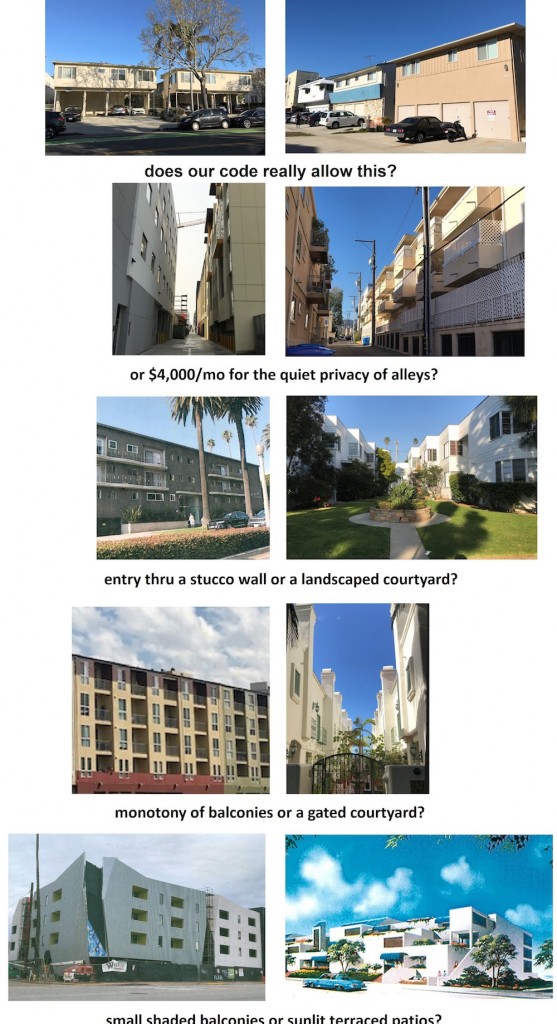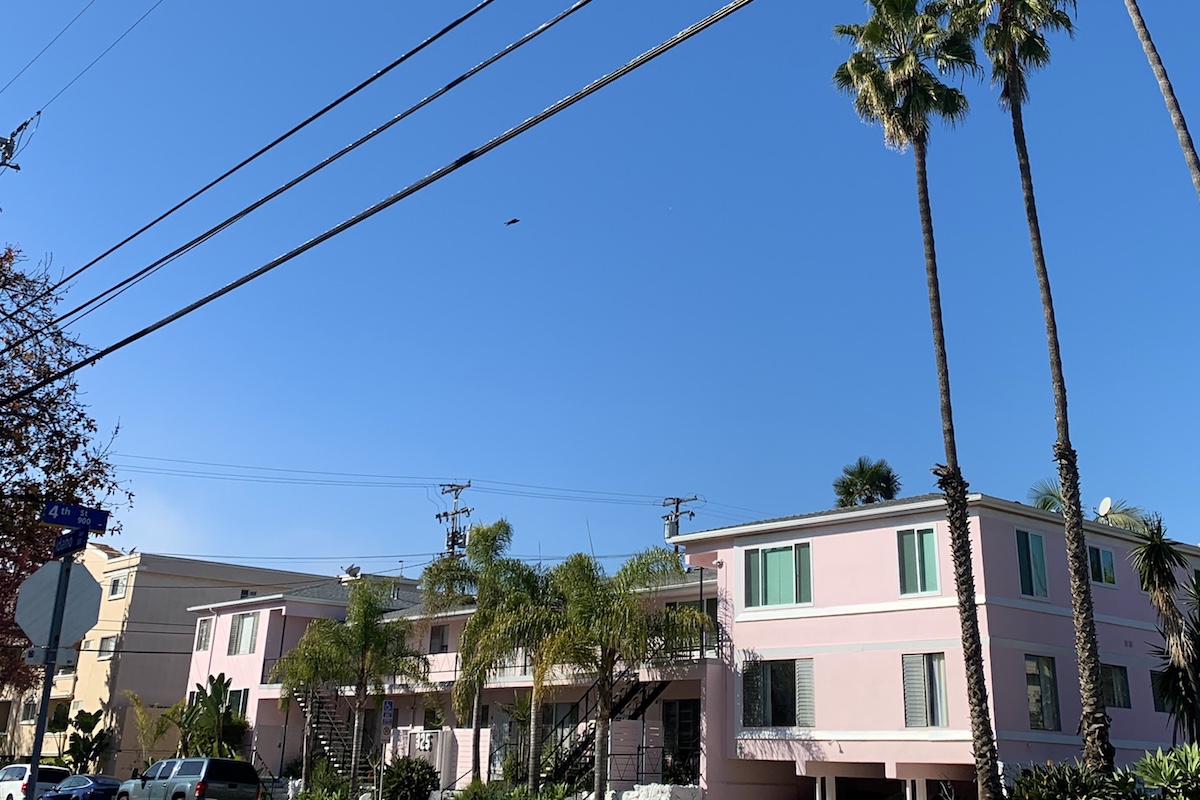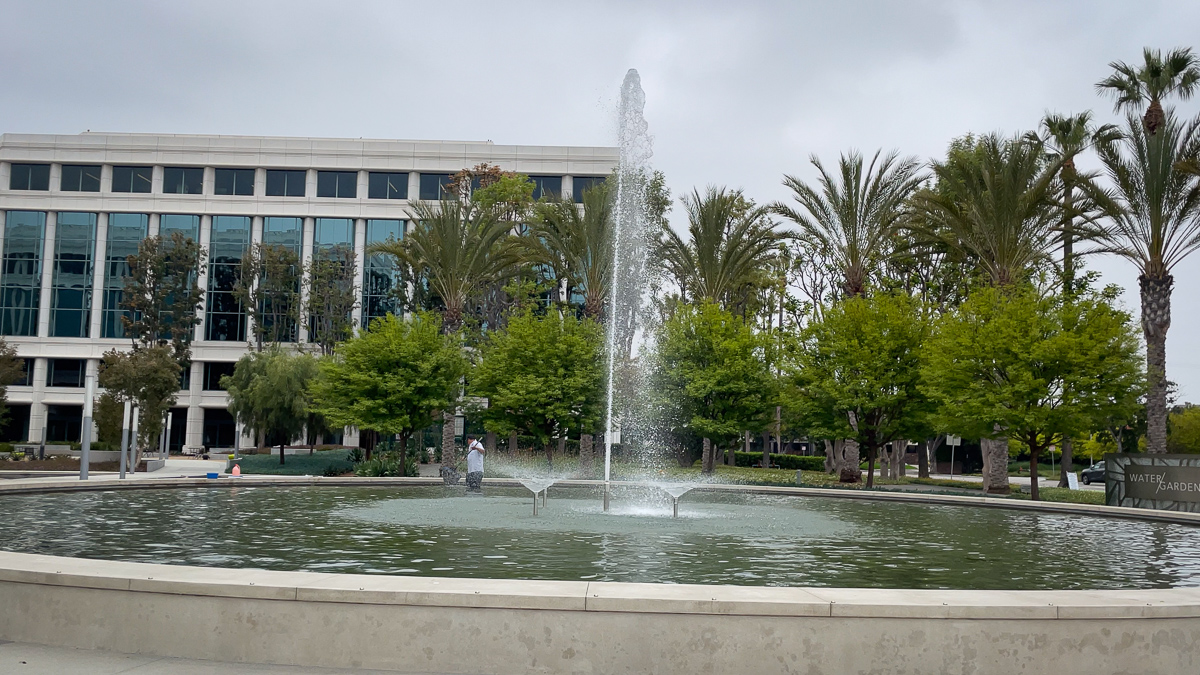
This is the 4th of a 5 part article outlining serious issues Santa Monica residents and the City Council are facing.
The 1st article clearly outlined where developers come first, then tourists, and lastly residents! And the article further described the commercial and residential buildings that developers were constructing will severely damage and unnecessarily change our low-rise beachfront city!
The 2nd article dealt with the increasing “canyonization” of our 8.3 square mile downtown (4% of Santa Monica’s total area) and the pressing need to re-establish a pedestrian and resident friendly environment.
The 3rd article discussed the importance of our boulevards, the structural and visual fabric that ties our city together and accounts for 10% of our city’s area. With the most potential for development including 30% largely vacant properties, and another 40% being single story buildings, it discussed the feasibility of turning our boulevards into parkways lined with 3 & 4 story mixed-use courtyard and terraced development.
This 4th article, in addition to discussing our zoning code, paints a picture of our multi-family and single-family neighborhoods which covers a substantial majority of our city, and, like our downtown and boulevards, is quickly and significantly changing – a change that can still be altered, but not without a pro-active city council, city administration, and city planning staff taking inspired and creative action!
Corporate America and the housing industry saw the profits from increased housing demand and record high rents as seen early on with the tech industry’s rapid Bay area growth and Tesla’s move to Nevada and Texas and possibly the increasing homelessness seen across the country. Whatever the reason, housing production is front and center and financed by corporate America and foreign investment. And Santa Monica’s response has been a rapid transition from a history of courtyard housing to beach barracks stacked in blockhouses! And this stain on Santa Monica has spread to market rate housing as well as affordable. The photos accurately express the broken, faceless, and fractured direction of our residential housing – whether fronting on streets or alleys – totally lacking the greenery of a frontyard setback, courtyard, or terrace! This can’t be what $3,500-5,500 per month buys one! And sadly, these developers are hiring Santa Monica attorneys and architects to do their bidding in implementing this disaster.

The Land of Lincoln Boulevard is a major part of Santa Monica’s history but is rapidly becoming the 6 & 8 story Wall of Lincoln. And the “Gelsons” project at Lincoln and Ocean Park falls right in line. It is exhibit A as to the future of our city – 521 apartments in ten 5 & 6 story buildings, an 880 car garage and courtyards varying from 20 to 40 feet wide bordered by the 55 to 65 foot tall buildings – many of these spaces not much wider than the width of alleys.
Although the “Gelsons” project is 90% market rate housing, it is much denser than most FHA projects and reminds me of the packed government projects in more highly urbanized areas. I speak from experience having designed over 3,500 affordable FHA units throughout the western states. Those 2, 3, and 4 story villages always included significant and useable green space! And with regard to the lack of transparency in the administrative approval process that was railroaded through without any limits, if anyone in our planning department was responsible, they should be terminated immediately. And any council person involved with approving the staff recommendations that permitted such upzoning and densification should be voted out at the first opportunity.
We need to rethink our approach to affordable housing! Years ago a bargain was made with the devil to provide 20-30% affordable housing in market rate projects in exchange for increased height and density. But in this marriage, we certainly were bamboozled by the developers, realizing only 8-10% affordable units instead of 20 or 30%, while the 90% market rate units paid significantly higher rents to cover increased land and construction costs and financing, adding to our gentrification problem throughout the city. This totally unsuccessful marriage with the development partners lusting for more height and density could have been avoided. The city simply could have used a percentage of their substantial land holdings to put well-designed affordable housing on public property and included substantial green area – saving +/- 35% of the total project cost with zero land cost, reduced construction financing, and property tax savings! And these communities of affordable and workforce housing might also include preschools as a local resident recently suggested to me. This would have decreased gentrification, council in-fighting, etc., etc., and even provided the potential transition to property ownership over a 20 year mortgage write-down – adding value to the renters instead of to developers! Shame on developers and on our city for allowing this to continue for so long!
But do we need to allow for the growth which state law, under the influence of big $, is now requiring and, if so, can we still maintain our garden city? The LA Times December 20, 2021 headline reads “California’s Population Continues to Decline.” If so, why do we need to build 8,800 housing units. especially when there are approximately 4,700 vacant units? And there’s been no appreciable increase in population – only 4,000 in the last 60 years! Could the housing crisis be one of affordability and not a supply issue? The state’s housing element should not be used to manipulate the planning and future of our city!!
And what can be said about a zoning code that allows oversized, faceless and characterless prison blocks. Buildings need to be less “copy & paste” and more original. We need to abandon our current path of trading environmental quality for buildings on steroids with little, if any, open space! And we need planning decisions based on principles, not special interests. And there was no need for recent upzoning to meet the growth numbers dictated by the state when our zoning readily accommodated on under-developed property 4 times more than the 8,800 units required. Upzoning with a % of inclusionary housing is not the answer. We can’t continue to trash our environment.
So the question remains: is Santa Monica to be a dense high-rise city in the shadow of downtown LA or a low-rise city with a relaxed beachfront and garden environment? We need a code that requires courtyards and sunlight instead of corridors and shadow, one that is infused with meaningful design requirements and encourages low to mid-rise development using tax and processing benefits. Let’s turn our zoning code from a negative to a positive. We need to rid the code of DA’s (Development Agreements) which developers frequently use to take advantage of our city. However, the Gelson’s project is a “by right” approval resulting from staff/council gerrymandering of the code, and seriously aided by Sacramento developer backed politicians. And in the process of revising our code, let’s educate the Mayor and the City Council on design and planning issues, as well as seriously review the Planning Staff and Director!
Instead of canyonizing our city we can still be a low-rise city with a relaxed beachfront and garden environment and meet whatever growth is our reality, so stay tuned for article 5 next week – explaining a roadmap to achieve and maintain these goals. Thanks for listening!
Ron Goldman FAIA
for SMa.r.t. (Santa Monica Architects for a Responsible Tomorrow)
Thane Roberts, Architect, Robert H. Taylor AIA, Ron Goldman FAIA, Architect, Dan Jansenson, Architect, Building and Fire-Life Safety Commission, Samuel Tolkin Architect, Mario Fonda-Bonardi, AIA, Planning Commissioner, Marc Verville, CPA (inactive), Michael Jolly, AIR CRE. For previous articles see www.santamonicaarch.wordpress.com/writings













